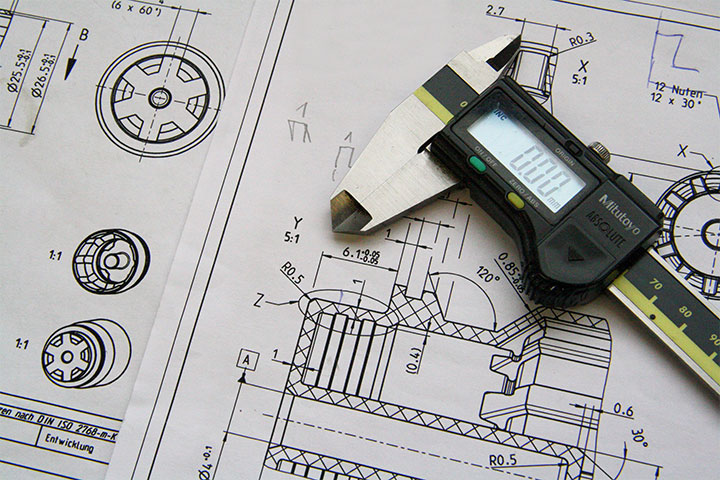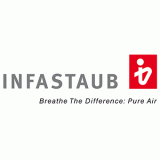
All electrical equipment, including household appliances, should be conform to the technical requirements and be certified according to the standards before being placed into the market in Russia, Kazakhstan and in the Eurasian Economic Union (EAEU).
Legal framework
Since February 15, 2013, the conformity assessment procedure has been carried out according to the following EAEU technical regulations:
- Technical regulations TR CU 004/2011 On safety of low voltage systems
- Technical regulations TR CU 020/2011 On electromagnetic compatibility
- Technical regulations TR EAEU 037/2016 On restriction of the use of certain hazardous substances in electrical and electronic equipment (from March 1, 2018)
- Technical regulations TR EAEU 048/2019 The requirements for the energy efficiency of energy-consuming devices
In addition, some electrical and electronic devices are subject to:
- Certification or declaration of communications equipment that is suitable for use in the public switched telephone network (PSTN)
- FSB notification of devices that are suitable for encrypting data
- Licensing of radio and high frequency equipmen
In Belarus, certain regulations on the energy efficiency of electrical devices have been in effect since 2017. Most often it affects household appliances such as refrigerators, televisions, ovens, washing machines, dishwashers and others. These devices must be marked with an energy label.
Certification of household appliances is defined in the Decree of the Council of Ministers of the Republic of Belarus No. 849 "On some questions of conformity assessment in the National System for Conformity Confirmation of the Republic of Belarus" dated October 21, 2016.
Application area
The technical regulation TR CU 004/2011 On safety of low voltage systems affects all low voltage devices which are intended for the alternating current of 50 to 1000 volts and direct current 75 to 1500 volts.
The technical regulation TR CU 020/2011 On electromagnetic compatibility applies to all devices that can generate electromagnetic interference or to those devices which functionality depends on the influence of external electromagnetic interference. The technical regulation TR CU 020/2011 does not apply to the use of radio frequencies of the governments. This is regulated exclusively by the national legislation of the Member States of the Customs Union.
The technical regulations TR EAEU 037/2016 On restriction of the use of certain hazardous substances in electrical and electronic equipment sets the uniform requirements for permissible concentrations of lead, mercury, cadmium and hexavalent chromium in the manufactured electrical devices.
Conformity assessment for electrical appliances and household appliances
There are two types of conformity assessment for electrical appliances:
The EAC declaration or the EAC certification can only be applied for by the company established in the Eurasian Economic Union. For this reason an authorized representative within the EAEU is required. If you need an authorized representative, we will be happy to offer you a suitable company that takes over this function.
EAC certification
The EAC certification is carried out on the analytical basis of the technical documents and the company's internal test protocols or the test protocols provided by accredited test laboratories, and possibly on the basis of an manufacturing audit.
The application for a certificate can proceed according to different procedures, depending on whether it is series production, a single or batch delivery.
List of appliances that are subject to EAC Certification:
- electric appliances (washing machines, dryers, irons, kitchen appliances, vacuum cleaners, air conditioners and fans, hair styling and hairdryers, massage equipment, fitness machines, sewing machines, extension cables)
- computers, printers, scanners, copiers
- devices that can be connected to electronic computer equipment
- electrical tools
- electronic musical instruments
- radio, CD-players etc.
- video cameras, video recorders, television
- cables
- automatic and safety switch
- switch and control cabinets and electrical distribution boards
- electronic control units
The EAC certificate is an official proof. The EAC certificate may only be issued by an independent notified body accredited in a Member State of the Customs Unity, after a quality inspection. In order to apply for the EAC certificate, the applicant must submit certain documents.
EAC Certification of Explosion-proof equipment

The conformity assessment of explosion-proof equipment for operation in explosive atmospheres, e.g. in mining, takes place in the form of the mandatory EAC Certification according to TR CU 012/2011 On safety of the equipment for operation in explosive atmospheres.
The explosion-proof equipment for operation in explosive atmospheres should be designed and manufactured in accordance with the technical regulation TR CU 012/2011 in such a way that an explosion or fire as a result of operational use can be prevented under the specified conditions.
The EX Certification in the Eurasian Economic Union is in many ways similar to the European system of ATEX certification according to RL 2014/34/EU or RL 94/9/EG. Nevertheless, there are major differences between them. If you already have an ATEX Certificate for your explosion-proof equipment, it can simplify the EAC EX certification for the Russian market, but not replace it.
Schemes of EAC certification
| Scheme | Description |
|---|---|
| 1C | is intended for series production. The EAC certificate is issued for a maximum of 5 years. In this case, samples are to be tested and a manufacturing audit is to be carried out. The EAC certificate is issued on the basis of the test report, examination of technical documents and results of the audit.
An inspection control must also be carried out every year. |
| 3C | is intended for a batch or single delivery. In this case, samples are also to be tested. |
| 4C | is intended for a single delivery. In this case, samples are also to be tested. |
List of appliances that are subject to EAC Declaration:
All other devices that are on the list of appliances subject to certification need the mandatory EAC Declaration according to TR CU 004/2011, TR CU 020/2011, TR EAEU 037/2016, and TR EAEU 048/2019.
The EAC Declaration is prepared upon the request of the applicant and submitted to the accredited notified body in Russia, Kazakhstan or other member state. The EAC Declaration must be recorded in the EAEU uniform register by a notified body accredited in the Member State of the EAEU. The declaration registered in the EAEU is valid in the entire EAEU.
In addition to the EAC declaration, one can apply for a voluntary GOST R certificate. The voluntarily certified products may be marked with the certification marking. Any product can be certified according to GOST standards in order to convince customers of the quality of products. The voluntary certificate GOST R then contains a reference to the EAC Declaration.
Schemes of EAC declaration
| Scheme | Description |
|---|---|
| 1D | is intended for series production. This scheme requires the type examination of product samples. Type examination of product samples is carried out by the manufacturer. |
| 2D | is intended for a single delivery. This scheme requires the type examination of product samples. Type examination of product samples are carried out by the manufacturer. |
| 3D | is intended for series production. This scheme requires product samples to be tested by a laboratory accredited by the EAEU. |
| 4D | is intended for a single delivery. This scheme requires product samples to be tested by a laboratory accredited by the EAEU. |
| 6D | is intended for series production. This scheme requires product samples to be tested by a laboratory accredited by the EAEU. |

Required documents:
- detailed product description
- technical drawings
- instruction manual
- test reports
- data sheet
- technical passport
- a copy of certificate of conformity
- a copy of certificate from quality management system
- reports of manufacturing audit for series production
- a supply contract and shipping documents
EAC Marking

If the conformity check is successful, the products must be marked with the EAC conformity mark. EAC is an abbreviation for Eurasian Conformity. The EAC marking should be attached to each individual production unit, packaging or accompanying documentation.
Requirements for the EAC conformity marking:
- EAC marking must be easy to read with the naked eye
- Dimensions are not less than 5 mm
- The EAC marking should be monochrome and colour contrast to the surface
- The EAC sign can be placed in any way that guarantees its legibility throughout the life of products
Marking
The label should be placed on the device itself and on the packaging with the following information:
- designation (type, model, brand)
- technical characteristics
- trademark of the manufacturer
- date of manufacture: year and month
- country of origin
- EAC Conformity marking
- Energy consumption labels on the exhibition equipment
If the label cannot be placed onto the device, this information must be included in the operating instructions.
In addition, the operating instructions include the following data:
- application area of the device
- technical data
- conditions for safe use
- information on disposal, assembly, transport, and storage
- manufacturer and his address
- importer and his address
- date of manufacture
All information must be provided in Russian and/or in the official language of one of the Member States of the Eurasian Economic Union.
Authorized representative
 The manufacturer, which is not based in one of the member states of the Eurasian Economic Union, is not entitled to request the conformity assessment of electrical devices to comply with the requirements of the technical regulations.
The manufacturer, which is not based in one of the member states of the Eurasian Economic Union, is not entitled to request the conformity assessment of electrical devices to comply with the requirements of the technical regulations.
In order to be able to carry out a conformity assessment, the foreign manufacturer must commission a authorized representative in one of the member states of the Eurasian Economic Union. This then represents the foreign manufacturer's interest in working with the certification bodies of the Eurasian Economic Union with regard to the safety and quality of products and compliance with technical regulations.
Period of validity of EAC conformity assessment certificates for electrical equipment
The validity period of the EAC certificate or EAC declaration for electrical equipment differs depending on the applied technical regulations, the selected scheme, the type of production (serial production, individual delivery, etc.) and equipment and ranges on average from one to 5 years. Those parameters are determined in the respective technical regulation.
Duration and costs for EAC certification
The duration and costs associated with an EAC certificate application for electrical equipment depend on several different factors, such as the classification of the product, any required laboratory checks and the complexity of all examinations. As such the exact conditions of the EAC certification are always determined individually based on the required documentation.
Please note that an application for an EAC certificate can take several weeks to process.
Delivery of the documentation
If you order the EAC Certificate on electrical equipment, you will receive a copy of it via email immediately after our successful certification procedure. The original document and two certified copies will be sent by post.



















































